
Charles Linville, “Azure Databricks: The Public Cloud and Scaling, Sharing, and Saving in Data Science Instruction”

Fall 2019 saw the first offering of STAT 480 – Data Science Foundations that used public cloud computing resources, specifically Databricks Community Edition and Azure Databricks. While cloud computing is now one aspect of the subject matter of this course, the use of public cloud computing resources (e.g. Microsoft Azure, Amazon AWS, and Google Cloud Platform, etc.) in instruction has a great deal to recommend it even when cloud computing is not in the foreground of a course. In addition to describing the rationale behind choices like these, the presentation will mention specific Azure Databricks cluster specifications which were useful for the course.
Charles Linville teaches STAT 480, data science foundations, as a visiting associate professor of Statistics, and is an adjunct instructor in the iSchool. He holds a BS and MS from Case Western Reserve University, and a PhD in Engineering and Public Policy from Carnegie Mellon University.
Glen Worthey, “Where to find millions of books, and how to read them”
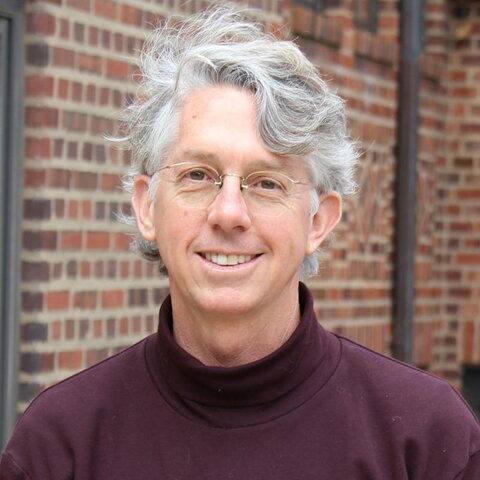
The HathiTrust Digital Library is the world’s largest, holding nearly 17.5 million digitized volumes from research libraries around the world. The HathiTrust Research Center, co-located here at UIUC and at Indiana University, is the research gateway to that enormous, near-universal library. This talk will briefly introduce the Center's text and data mining tools, which allow researchers to computationally analyze the millions of volumes of text held in the HathiTrust Digital Library.
Glen Worthey is the associate director for research support services in the HathiTrust Research Center (HTRC), a collaboration between the University of Illinois, Indiana University, and the HathiTrust to enable advanced computational access to text found in the HathiTrust Digital Library. Glen is based at the iSchool at Illinois.
Kevin Bird, Joshua Mickle, “State of Cloud Platforms at Illinois”

State of the Cloud Platforms (AWS, Azure, GCP) on campus:
- Introductions of the Tech Services team
- Current interesting use statistics and FAQs
- How it works at Illinois
- Recent news and use cases
- Upcoming events
- Feedback and questions
Kevin Bird is systems engineer who worked for Technology Services for 24 years, most recently with the campus Unified Communications systems and cloud platform services.
Joshua Mickle is systems engineer who worked for Technology Services for 19 years, most recently with the campus Exchange email system and cloud platform services.
Neal Davis, “Software and Data Carpentry at the University of Illinois”

The Carpentries are a volunteer-driven organization dedicated to teaching and developing a collaborative curriculum to introduce researchers to sound principles of programming and data management. I will talk about the local Carpentries effort, the benefits and community, and ways to get involved and take advantage of this program.
Neal Davis is the assistant director of training for Computational Science and Engineering at Illinois. He earned his Ph.D. in Nuclear Engineering studying the surface reactions of uranium metal. He conducts training across a range of traditional engineering software programs and packages. His professional interests include engineering pedagogy, computational materials science, and the history and philosophy of science.
Taras Pogorelov, “Capturing dynamic signaling biomolecular structures in complex environments”
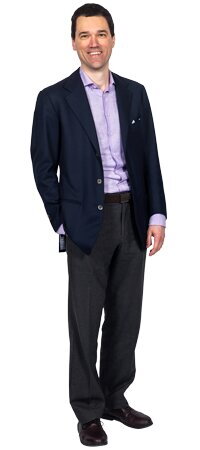
This talk focuses on combining computational and experimental approaches to study complex molecular systems. Several packages were used in the study such as MATLAB and R Studio. The computational methods include: classical all-atom molecular dynamics performed with NAMD2 and analyzed with VMD, both programs developed by the NIH Center at Beckman Institute; the electronic structure calculations were performed with the quantum chemistry package and Gaussian 09.
Taras Pogorelov is a research assistant professor of Chemistry and Biophysics, Affiliate of Beckman Institute and National Center for Supercomputing Applications and senior research scientist at the School of Chemical Sciences at Illinois. He holds degrees in biomedical/electrical engineering from Bauman Moscow State Technical University, Russia and in mathematics and chemical physics from University of Illinois. He earned his Ph.D. in chemical physics from Illinois.
Scott Althaus, “Improving Societal Resilience to Terrorist Attacks Using Large-Scale Text Mining of News Coverage”

Terrorist organizations create dramatic events to stimulate certain forms of strategically desirable news coverage. Terrorists want news coverage that increases their own visibility, legitimacy, and prestige while also instilling feelings of threat, panic, or moral indignation in a target population. Despite strong academic interest in the strategies and effects of terrorist activity, how these terror events are communicated to target populations remains less well understood. It is especially unclear whether news coverage of terrorist events tends to be presented in ways that advance the strategic communication goals of terrorist organizations. This project draws on the lived history of tens of thousands of terrorist attacks around the world to assess how discourses about terrorism have evolved in New York Times reporting from 1945 to 2019. We leverage known features of terrorist attacks as a natural experiment to examine whether strategically important features of Times-produced news discourse respond to terrorist activities in ways that align with the strategic aims of terrorist organizations.
Scott Althaus joined the University of Illinois faculty in 1996 with a joint appointment in the departments of Political Science and Communication. He is currently the Merriam Professor of Political Science, Professor of Communication, and Director of the Cline Center for Advanced Social Research at the University of Illinois. He is also a faculty affiliate of the School of Information Sciences, the National Center for Supercomputer Applications, the Center for Social and Behavioral Science, and the Illinois Informatics Institute.
Lane Schwartz, "Computational Linguistics and Endangered Language Documentation"

St. Lawrence Island Yupik (ISO 639-3: ess) is an endangered language of the Bering Strait region indigenous to St. Lawrence Island in far western Alaska and the Chukchi Peninsula of far eastern Russia. The polysynthetic nature of Yupik morphology makes many traditional computational approaches to modeling language phenomena in Yupik impractical. While a small number of computational resources have been developed for some languages in the Inuit branch of this language family, to our knowledge, no computational tools have previously been developed for St. Lawrence Island Yupik. We present the first such tools for St. Lawrence Island Yupik, and discuss their practical implications for language documentation and revitalization efforts. These tools include a web-based framework that incorporates a basic spell checker and transliteration utilities, including transliteration from the Latin and Cyrillic orthographies to IPA, as well as a separate morphological analyzer built using the foma finite-state toolkit.
Lane Schwartz is an Assistant Professor of Computational Linguistics at the University of Illinois at Urbana-Champaign. His research centers on computational linguistics for endangered languages, with a focus on St. Lawrence Island Yupik; this includes work in polysynthetic language modelling, cognitively-motivated unsupervised grammar induction, compiler-based approaches to neural network frameworks, and machine translation. He is one of the original developers of Joshua, an open source toolkit for tree-based statistical machine translation, and was a frequent contributor to Moses, the de-facto standard for phrase-based statistical machine translation.
Elisandro Cabada "Application of 3D printing services in the Library"
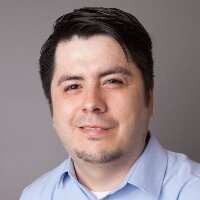
Driven to democratize access to emerging technologies and the knowledge it affords, the Grainger Engineering Library provides access to a 3D Printing service to support your design learning needs. Additive manufacturing technologies allow you to build, 3D print, and test your design ideas in real time. In this session you will learn about the 3D Printing technologies and services available in the Library.
Elisandro Cabada is an Assistant Professor and the Medical and Bioengineering Librarian at the Grainger Engineering Library where he provides emerging technology services to support higher education. His research interests include studying the barriers to access, pedagogical affordances, and application of emerging and immersive technologies in research and instruction.
Ellen Fireman, Michael Weissman, Daniel Eck, and Zach Donnini “COOL Stats - How to radically expand enrollment, reduce costs and improve quality in lecture courses”
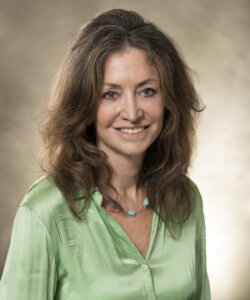
The Covid situation has converted an already important issue- how to deliver lectures well online- to an urgent one. Several years ago we began the Coordinated Online Learning (COOL) project in Stat 100 and Stat 200. Careful records were kept of the outcomes over 4 semesters in which one teacher taught both versions. The system is simply to allow students to watch the recorded in-person lectures on their own time on the Web. In Stat 200, the in-person class is also allowed full access to the online lectures. Despite that, the online students have done better on objective computer-graded exams. After adjusting for a variety of potential confounders (ACT scores, high school GPA, etc.) the estimated average treatment effect of omitting in-person lectures is still slightly positive, although not statistically significant. We discuss what we think were the preconditions for making the purely online lectures successful.
Ellen Fireman has taught statistics to many thousands of students at the University of Illinois at Urbana-Champaign over the last twenty years. She prepared for this task by getting a B.A. in Philosophy from Harvard, teaching at a day-care center, driving a school bus, getting an M.A. in Secondary Math from Illinois, teaching at a public middle school, getting an M.S. in Statistics from Illinois, and teaching precalculus, calculus and then, for seven years, a large Linear Algebra class at Illinois. She received the Lynn M. Martin Award and the LAS and Campus awards for Excellence in Undergraduate Teaching for her statistics teaching.

Michael Weissman is a retired physics professor, with research in experimental condensed matter. His AB is in math, PhD in physics, and he's worked in biology, chemistry, and physics departments. For the last 5 years, he has been helping the local medical residents' journal club with the statistical aspects of their monthly readings.
David Dalpiaz, Department of Statistics, Swapping Your FOMO for NOMO

Given the increase and necessity of online courses, instructors have been presented with an ever growing number of technology choices to support their teaching. While it may be tempting to try and understand each of these options and select optimal choices, this talk will first argue that doing so creates FOMO, the fear of missing out. We will then argue for NOMO, the necessity of missing out. In addition to exploring the space of available instructional technologies, we will review how some courses have implemented these tools with FOMO and NOMO in mind.
David Dalpiaz is a Teaching Assistant Professor for the Department of Statistics at the University of Illinois at Urbana-Champaign where he teaches courses on machine learning, statistical computing, and mathematical statistics.
Christopher Kinson, Department of Statistics, GitHub as a Learning Management System
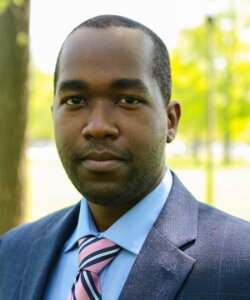
Git is a powerful version control technology intended for software developers who often collaborate to bring products to life. GitHub and GitHub Enterprise (its larger scaled commercial entity) are but one type of digital environment for collaboration and sharing of ideas and code through Git. I use Git and GitHub (Enterprise) as a learning management system for my section of STAT 385 Statistics Programming Methods. I will discuss the setup and implementation of my course with GitHub as the LMS, how you can do the same, and the pros and cons of this LMS.
Christopher Kinson is a Teaching Assistant Professor for the Department of Statistics at the University of Illinois at Urbana-Champaign, where he teaches computational courses on data management and wrangling, data analysis, and programming in R.
John Randolph, Department of History, SourceLab: Building the Future of the Historical Record

This talk will describe the evolution of the SourceLab initiative as a response to the rise of digital documentary culture. In an era of ubiquitous computing and communication technologies, everyone can make and share a documentary record. And we do: tomorrow’s historical record will be produced to a large extent by billions of people self-publishing digital objects–be they facsimiles of physical things or ‘born digital’ creations–that can (and will) be used as primary sources to think about the past. Yet what customizable models, what kinds of common infrastructure can the scholarly community offer to individuals and groups who would like their documentary work to have a durable impact: to have meaning for their communities and also (to the extent that they want it to) inform future historical scholarship and public history? How can we all learn to be more proficient and intentional producers of history’s next generation of sources? Alongside critical thinking and ‘media literacy,’ society needs to level up its documentary game.
John Randolph is Associate Professor of History at Illinois and Director of the Russian, East European, and Eurasian Center (REEEC). Since 2014, he has been working on the SourceLab program, a classroom-based collaboratory exploring the future of the historical record.
Laura Shackelford, Department of Anthropology, Creating and using immersive VR in the classroom

Field research for disciplines like archaeology provides authentic, interactive experiences that increase student interest and learning and provide opportunities for creative thinking and problem solving.
But these experiences can be limited by personal or environmental circumstances, making them unavailable to most students. In an effort to widen the accessibility of archaeology, we have taken advantage of modern VR systems to create an immersive, interactive, virtual archaeology course to teach field archaeology to undergraduate students. By placing the student as the main character in a virtual world that responds to their actions and input, participation and decision-making become essential and autonomy is encouraged.
Many key features of VR make it useful for educational and training scenarios, but the efficacy of educational VR is still largely untested. This presentation will discuss the challenges of designing a curriculum incorporating virtual reality and game-based learning, pedagogical trade-offs involved in virtual vs. real-world experiences, and the expansion of virtual learning into other social sciences and natural sciences.
Laura Shackelford is an Associate Professor in the Department of Anthropology, Associate Professor and Anatomy Director for the Carle Illinois College of Medicine, and a Research Affiliate with Illinois Informatics. Her research focuses on the evolution of our species, Homo sapiens, as a background to understanding recent human diversity. Laura’s research has a geographic focus in Southeast Asia, and she is the co-director of ongoing field research in northern Laos. In addition, Laura’s research explores virtual reality and technology in education in an effort to make human prehistory and archaeological field work accessible to more students. She can be reached at llshacke@illinois.edu.
Alison Reddy, Department of Mathematics, Modeling Student Performance and Enrollment Trends
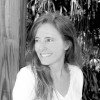
Calculus before the Senior Year of High School: Issues and Options. In spring 2017, 144,000 students took an AP Calculus exam before their senior year of high school. Of these, 44,000 took the BC exam. What should these students go on to take while still in high school. This push of the post-secondary mathematics curriculum into ever earlier grades creates a host of other issues including determining appropriate placement when these students get to college and creating college courses and supports that articulate with their high school experience. This talk will explore these issues from a data perspective and discuss some of the options.
Alison Reddy, Director of Mathematics Placement for the University of Illinois since 2007, has always viewed proper placement of incoming students as a high priority and found a way to provide effective placement on a large scale. Reddy, Coordinator of Quantitative Reasoning courses in the Department of Mathematics since 2003, is responsible for ensuring the success of more than 25 courses each year. She, herself, teaches approximately 500 first year students per year, the majority of whom are first generation and/or underrepresented minority students.
Reddy has dedicated her professional career to student success. Her career contains extensive experience with educational policy issues, best practices, pedagogy, and educational technology. Reddy is an experienced program coordinator with a demonstrated history in higher education. She is skilled in research, program evaluation, program development, program coordination, and issues effecting higher education.
Christopher Fields, Biotechnology Center, Services and Training Opportunities with HPCBio
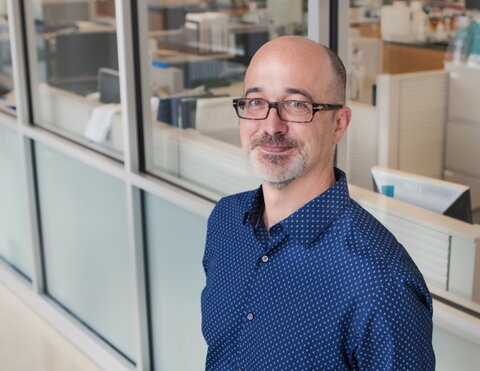
The High Performance in Biology group (HPCBio) was founded in 2012 to focus on four key missions for researchers: bioinformatics training, data analysis service, computational infrastructure, and applied research. For this talk I will focus on our training and analysis services for researchers both on and off campus, discussing challenges we have faced during 2020 and our group’s focus for 2021 and beyond.
Chris Fields is the Director of HPCBio. His focus is developing infrastructure within the HPCBio group for genomic analyses; this includes high-throughput analysis workflows for whole genome data processing and analysis, implementing and deploying self-contained pipelines such as MAKER and Interproscan, and developing custom solutions based on a project’s particular needs. Chris is also actively involved with bioinformatics open-source development, as a core developer for the BioPerl project an active contributor to the Generic Genome Browser (GBrowse), and more recently as a contributor to the Toil workflow system. He actively collaborates with various bioinformaticists from other open-source projects, specifically other projects from the Open Bioinformatics Foundation (such as Biopython, BioRuby, BioJava, and EMBOSS), and resources in the Generic Model Organism Database (GMOD) consortium of projects. Chris is also acts as the Secretary of the Board of the Open Bioinformatics Foundation (OBF). He always had a strong interest in computational biology, and during his second postdoctoral appointment switched to focus completely on computational biology, joining the Carl R. Woese Institute for Genomic Biology as an IGB Postdoctoral Fellow. His experience and background as a BioPerl core developer has led to a number of diverse collaborations over the last several years, including work that led to the standardization for the ubiquitous FASTQ format. Chris's role as BioPerl developer has also led to mentoring opportunities in the Google Summer of Code for NESCent and four more with the Open Bioinformatics Foundation.
Jake Bowers, Political Science, How do we know our statistical techniques work? Simulations in Policy-Oriented Research Design and Statistical Analysis
The rules of thumb that guide much of statistical practice arose in an era when it was difficult to learn about the performance of a particular statistical procedure as applied to a particular research design and dataset. For example, a common rule of thumb suggests that a sample of more than 30 people is sufficient to ensure good operating characteristics of statistical tests using data from randomized experiments or even using data from sample surveys. Another rule of thumb suggests that when an experimental experimental treatment is randomly assigned with strata or block (say, to different schools or villages) the overall effect should be a combination of the block-level effects, weighted by size of the block. Like all rules of thumb, these practices (and many others) work well for many studies. But following them would lead to uncontrolled false positive rates of tests and very biased estimators in other studies. This talk describes how I tend to use simulation to assess tests and estimators in specific circumstances. Such simulations can be very time consuming if one does not have access to a system with many cores, so I show approaches that work with many cores or CPUs. I am especially interested in talking with the audience about how to make statistical analysis simulations faster and more user friendly for social scientists unaccustomed to the idea of investigating the performance of their statistical tools let alone parallel computing.
Jake Bowers (http://jakebowers.org) is an associate professor of political science and statistics at the University of Illinois at Urbana-Champaign, is Senior Scientist with The Policy Lab, and Research Affiliate at the Center for Advanced Study in the Behavioral Sciences at Stanford. He was a Fellow on the White House Social and Behavioral Sciences Team and Office of Evaluation Sciences. He is Methods Director and Board member for the Evidence in Government and Politics network and co-founder of Research4Impact. His research in applied statistics and political methodology focuses on questions about statistical inference for causal effects in randomized experiments and observational studies.